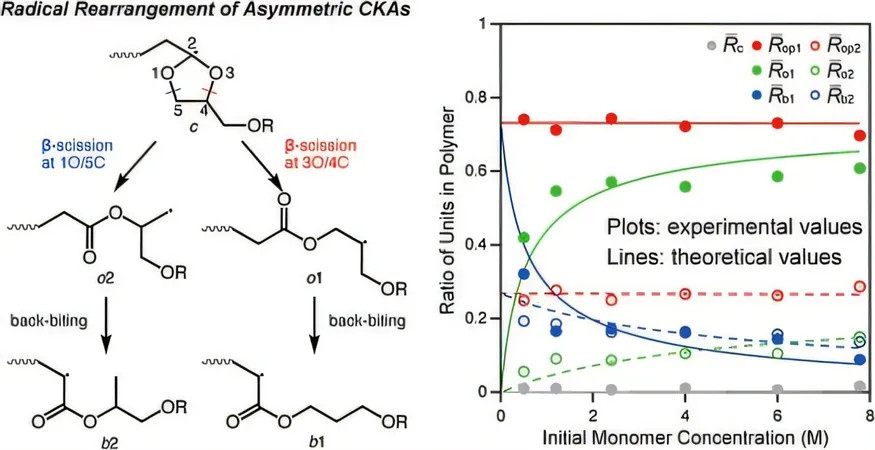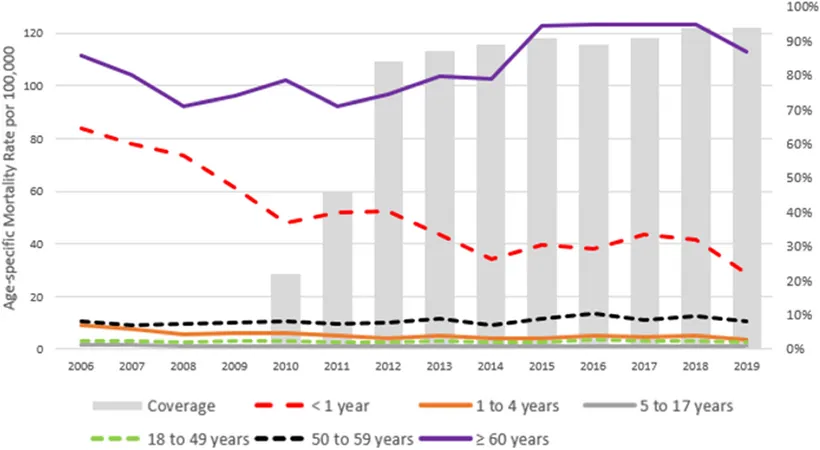
Revolutionary Research Unveils Game-Changing Biodegradable Polymers
2025-09-03
Author: Jia
A Major Environmental Challenge
Plastics, despite their practical benefits, pose a serious environmental dilemma. Their incredible durability means they can linger in our ecosystems for centuries, fueling pollution and degradation issues.
Enter Biodegradable Polymers
Seeking solutions, scientists are now diving into the world of biodegradable polymers. Among the promising candidates are cyclic ketene acetals (CKAs)—unique organic compounds structured in a ring formation that can be broken down by microbes.
Unlocking New Potential with CKAs
CKAs are stars in the world of chemistry, as they allow for radical ring-opening polymerization (RROP), a process that introduces specific organic groups into the polymer backbone. Yet, the relationship between CKA structure and polymerization remains a puzzle.
The Pioneering Research Team
A groundbreaking study led by Assistant Professor Shin-nosuke Nishimura and Professor Tomoyuki Koga from Doshisha University in Japan sheds light on this mystery. Their research, published in the journal Macromolecules, dives into the largely unexplored role of monomer asymmetry in RROP.
Dr. Nishimura explains, "By combining experimental polymer synthesis with a detailed kinetic model, we aim to revolutionize how we design degradable polymers."
Innovative Experiments Yield Insight
The researchers synthesized a series of 5-membered CKAs and employed nuclear magnetic resonance (NMR) spectroscopy to analyze their chemical structures. One standout, the 5a monomer, was scrutinized under various conditions.
The NMR results indicated that polymers derived from 5a were indeed polyester-like and, crucially, degradable. In standardized OECD 301F tests, 5a showed a 20% degradation rate, compared to 40% for traditional cellulose.
Chemical Modifications Lead to New Discoveries
The researchers then explored the impact of altering the alkoxymethyl group at the 4-position of the CKAs. Their experiments with 5a versus a non-modified CKA named C5 revealed that 5a resisted forming unstable chemical structures at varying temperatures.
Empirical Evidence and Future Applications
Further NMR analyses confirmed that 5a's modifications resulted in less than 10% of ring-retaining fractions, highlighting the improvements in biodegradability. Inspired by their findings, the team built a kinetic simulation model using density functional theory (DFT) calculations.
This model not only validated their experimental results but also provided a deeper understanding of 5a CKAs' reactions during RROP.
The Road Ahead: Practical Applications
Dr. Nishimura anticipates that their findings will dramatically advance the development of practical, eco-friendly materials—think sustainable packaging that minimizes microplastic pollution, agricultural films that decompose on schedule, and biomedical materials that are safe for the body.
He emphasizes, "In the next five to ten years, our kinetic model could be a key tool for crafting robust and environmentally responsive radical polymerization processes."
Conclusion: A Greener Future
This pioneering work not only enhances our comprehension of RROP but also paves the way for innovative biodegradable polymers that could significantly reduce environmental harm.






 Brasil (PT)
Brasil (PT)
 Canada (EN)
Canada (EN)
 Chile (ES)
Chile (ES)
 Česko (CS)
Česko (CS)
 대한민국 (KO)
대한민국 (KO)
 España (ES)
España (ES)
 France (FR)
France (FR)
 Hong Kong (EN)
Hong Kong (EN)
 Italia (IT)
Italia (IT)
 日本 (JA)
日本 (JA)
 Magyarország (HU)
Magyarország (HU)
 Norge (NO)
Norge (NO)
 Polska (PL)
Polska (PL)
 Schweiz (DE)
Schweiz (DE)
 Singapore (EN)
Singapore (EN)
 Sverige (SV)
Sverige (SV)
 Suomi (FI)
Suomi (FI)
 Türkiye (TR)
Türkiye (TR)
 الإمارات العربية المتحدة (AR)
الإمارات العربية المتحدة (AR)